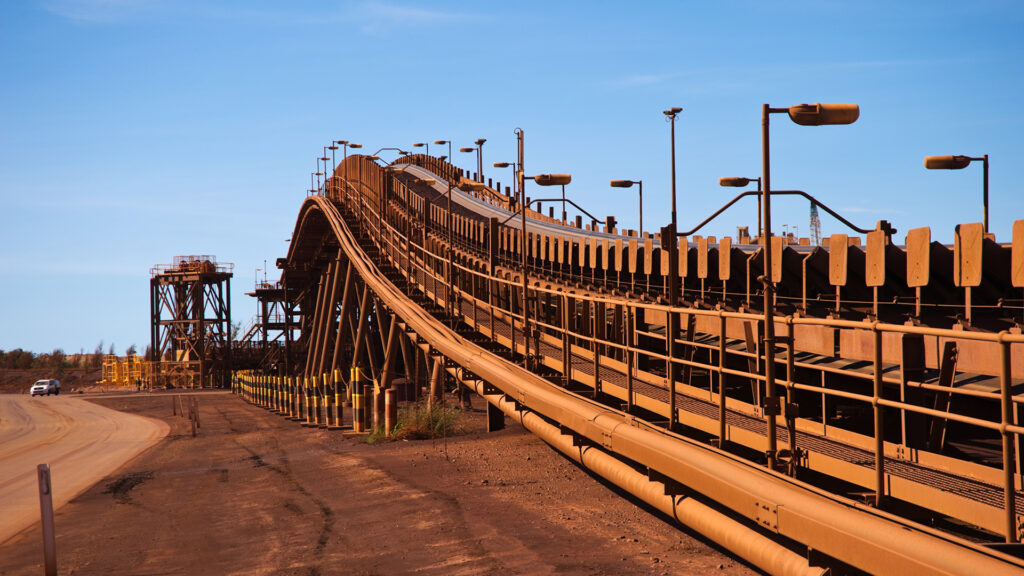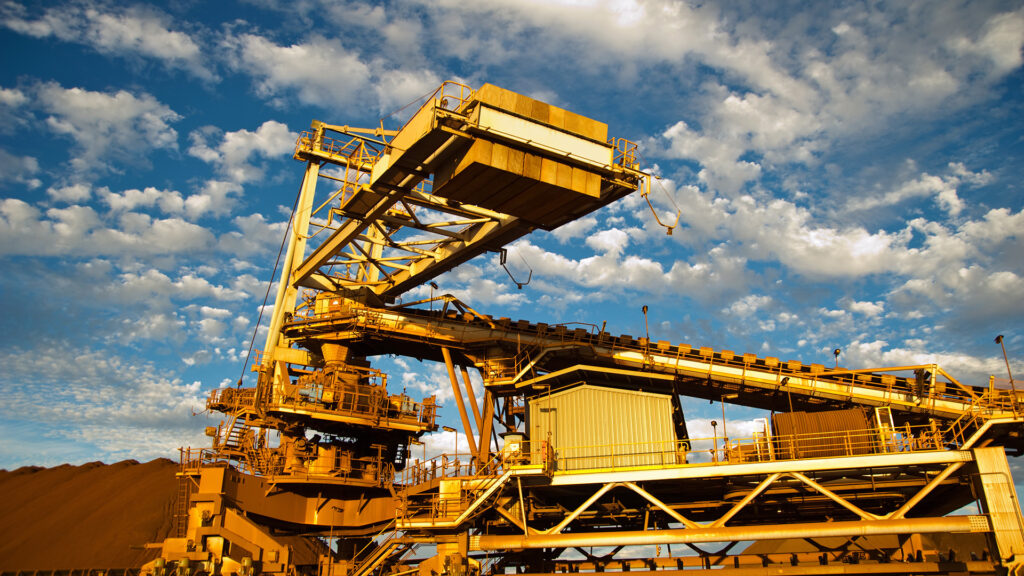
The legal and regulatory treatment of FPSOs, with a focus on limitation of liability
A question that has long vexed the offshore energy industry is, how will courts and regulators treat the various species of floating exploration, production, storage and offloading vessels? From a legal and regulatory perspective, will these craft be treated in a similar way to trading ships, such as tankers? Or, will they be regulated as if they were permanent offshore installations, such as wellhead platforms
Introduction
Although floating units have been used in the offshore industry for many years, a conclusive and authoritative answer to the question is yet to emerge. There are various reasons for this. As will be seen, the question itself is far from straightforward. Any definitive answer is likely to have far-reaching consequences for the many different participants in the sector: owners, operators, insurers, financiers, governments, and so on. Some of these participants may have divergent interests and favour different answers to the question. A meaningful and effective answer to the question can only be provided by an official body such as a state court or regulatory authority. But unless a singular answer is adopted as an international standard, different countries are likely to answer the question in different ways, which is not a desirable outcome for any global industry. Finally, because there have fortunately been few serious incidents involving floating offshore craft, there has so far been only a very limited number of occasions where it has been necessary for a court to tackle the question.
As exploration and production (E&P) operations involving floating offshore craft become more widespread, challenging and costly, it is becoming increasingly important for all participants in these projects to have a clear understanding of the legal and regulatory risks involved. The question of how local courts and regulators will treat floating offshore craft is central to an accurate assessment of what these parties’ exposures might be in the event of a serious incident. It is therefore in all parties’ interests to have the benefit of a conclusive and internationally-accepted answer to the question.
Different floating offshore craft
Before one can even begin to evaluate the possible answers, it is first necessary to understand precisely what question is being posed, and why. For instance, to which specific types of offshore craft does the question need to be directed? There is, of course, a vast range of different floating units deployed offshore today. These may include FPSOs, FSOs, drilling rigs, drillships, and a whole range of associated support units such as well intervention vessels, accommodation barges and so forth. For present purposes we can divide these craft into three broad categories.
First, there are craft that are constructed and function as “ships” in the conventional sense of the word. These are ship-shaped, self-propelled, and navigate regularly between different locations, without any permanent or semi-permanent attachment to surface or subsea facilities or the seabed. Relevant examples may include offshore service vessels such as pipelayers, dredgers, seismic survey vessels and ROV support vessels.
Second, there are floating offshore units that do not resemble “ships” in the conventional sense, whether in terms of construction or function. These craft are neither ship-shaped nor self-propelled, and as such do not navigate the seas on unassisted voyages in the same manner as trading ships. This category may include drilling rigs, and various types of offshore floating platforms and structures.
Finally, there is a third category of floating offshore craft that falls somewhere between the first and second groups. This category includes all the various species of ship-shaped exploration, production, storage and/or offloading craft, such as drillships, FPSOs and FSOs. It is impossible to be definitive about the characteristics of this group of craft, because there are so many different variations deployed offshore today, as well as new species under development, such as FLNG vessels. What these craft generally have in common is that they resemble “ships” in much of their construction, but rather than navigating regularly between different places like trading ships, they have some form of ongoing (but not necessarily permanent) connection to surface or subsea facilities, or to the seabed. For convenience, we shall refer to these types of craft as “FPSOs”.
Applicable laws and regulations
The rather imprecise definition of this third category is one of the main reasons one is faced with the question, will FPSOs be subject to the laws and regulations that apply to trading ships, or to those governing offshore E&P installations? In many respects, it is possible for FPSOs to be governed by both regimes – “shipping” laws and regulations could apply to an FPSO’s “ship-related” components and activities, and “offshore” laws and regulations could apply to its “E&P-related” components and activities. In practice, however, two significant issues will arise. First, not all aspects of FPSO operations can be divided neatly into either “ship-related” or “E&P-related”, and regulated independently of each other. Second, conflicts can arise between certain “shipping” and “offshore” laws and regulations, meaning that it may not be possible for an FPSO to comply fully with both regimes at the same time.
These practical considerations lead to the commonsense conclusion that, in any given place, there should be a single and consistent body of laws and regulations that apply to FPSOs. Furthermore, given the geographical location of many FPSO projects, the fact that FPSOs can potentially be deployed in more than one place, and the increasingly trans-national nature of the offshore energy sector, there should be consistency – if not close harmonisation – between the applicable laws and regulations of producing states.
An authoritative and internationally-recognised determination on the legal and regulatory treatment of FPSOs – as ships or as offshore installations – would go a long way to achieving these broad objectives. However, an informed determination will first require careful examination of the relevant laws and regulations, and the consequences of applying these to FPSOs. There is, of course, an enormous range of relevant laws and regulations, which differ from state to state. They may extend to matters of health and safety, structural integrity, licensing and permits, pollution and environment, and civil liability, to name just a few. It is beyond the scope of this article to examine all these different types of rules, but what is clear is that in many cases, the application of “shipping” laws and regulations to FPSOs can give rise to very different obligations and liabilities, when compared with “offshore” laws and regulations.
Limitation of liability
An example in point is limitation of liability. Many states permit shipowners, and sometimes other parties, to limit their liability for third-party claims for loss or damage relating to the operation of a ship. The widespread adoption of international conventions on civil liability in the marine sector, means that a shipowner’s entitlement to limit liability is today recognised with reasonable consistency across a great many trading states.
There are two main international conventions that permit shipowners to limit their liability. The International Convention on Limitation of Liability for Maritime Claims (LLMC) deals with a range of different types of claim, including claims relating to death, personal injury and property damage “occurring on board or in direct connection with the operation of a ship”. The LLMC entitles a “shipowner” (which also includes a charterer, manager or operator) to limit their liability with respect to such claims, and the level of limitation is calculated by reference to the ship’s gross tonnage. On the other hand, the International Convention on Civil Liability for Oil Pollution Damage (CLC) deals specifically with claims arising from loss or damage caused by the escape or discharge of oil from a ship. The owner of a ship is deemed to be strictly liable for such loss or damage, but is entitled to limit their liability at a level calculated again by reference to the ship’s gross tonnage.
Nearly every participant in an FPSO project – especially the vessel’s owners, charterers, operators, and their respective insurers – will want to know whether or not the LLMC and CLC limits of liability will be available in the event of future third-party claims relating to the operation of the FPSO. The potential financial repercussions cannot be overstated. Taking as an example a typical VLCC-sized tanker of 160,000GT, the limit of liability currently available in the United Kingdom for physical damage claims is about US$63 million under the LLMC, and US$135 million under the CLC. The scale of recent incidents in the offshore energy sector demonstrates that these sums are substantially lower than the third-party liabilities that may be faced in the event of a significant incident. The tragic events at the Macondo field in 2010 are a case in point.
Given the potentially enormous exposures that are now a reality of operating offshore, one might think that it would be clearly established whether or not the owners of an FPSO may be entitled to limit their liability under the LLMC and the CLC. The difficulty, however, is that the application of these conventions hinges on the involvement of a “ship”, and therefore, in each case it would need to be determined whether or not a particular FPSO falls within the meaning of “ship” under the relevant convention. This may sound like a fairly straightforward enquiry, but the truth is very different indeed.
The Limitation Convention (LLMC)
Looking first at the LLMC, the word “ship” is simply not defined. There are court decisions in many different countries about what types of craft are and are not “ships” for the purpose of laws and regulations on matters ranging from health and safety to taxation. But only a very small number of these decisions have even touched upon FPSOs (and have reached a variety of conclusions), and there are no known decisions in the specific context of the LLMC.
There are, however, two important considerations to be found elsewhere in the LLMC. First, article 15(4) states that in certain, limited circumstances, the LLMC does not apply to “ships constructed for or adapted to, and engaged in, drilling”. Although there is no known authority on the point, the logical conclusion from this provision would seem to be that, in other circumstances, the LLMC would apply to drillships. Second, article 15(5) states that the LLMC does not apply to “floating platforms constructed for the purpose of exploring or exploiting the natural resources of the seabed or the subsoil thereof”. Again, there is no known authority on what types of unit fall within this provision, but it seems reasonable to expect that most FPSOs – being generally ship-shaped in their construction – are probably unlikely to be considered “floating platforms”.
Leaving these specific exclusions to one side, and focussing instead on the apparently broad meaning of the word “ship” in the LLMC, one can easily develop arguments in both directions. For instance, one might focus on the physical attributes of an FPSO and conclude that, because it is similar to a trading ship in its construction, it amounts to a “ship” under the LLMC.
On the other hand, one might focus on the functions of an FPSO and conclude that, because it is usually moored at a single location and engaged in hydrocarbon production or storage, it does not operate in the same way as a “ship” and, therefore, the right to limit liability does not arise. However, without further guidance in the text of the convention or from a court interpreting that text, it is impossible to say conclusively whether an FPSO will fall within the meaning of “ship” under the LLMC. Furthermore, given the variety of different FPSOs deployed offshore today, their specific features and functions would probably need to be examined in each case to determine whether a particular FPSO is a “ship” and, therefore, whether limitation of liability is available.
The Civil Liability Convention (CLC)
The position under the CLC is even more complex. In the original 1969 CLC, “ship” was defined in a broad but relatively clear way, as “any seagoing vessel and any seaborne craft, of any type whatsoever, actually carrying oil in bulk as cargo”. However, this was amended by the 1992 Protocol to the CLC, which produced a different and more convoluted definition. Although most contracting states have now adopted the 1992 Protocol, there are some jurisdictions where the 1969 wording is still in force. This inconsistency only adds to the potential complexity. However, for present purposes it is relevant to examine the “new” definition in the 1992 Protocol, and its implications for the right to limit liability. The new definition is lengthy, and is best reviewed when broken down into three main components.
First, “any sea-going vessel and seaborne craft of any type whatsoever…”. Whilst the exact meaning of this phrase will depend on the scope of the words “sea-going”, “vessel”, “seaborne” and “craft” (which are not defined in the CLC), on its face this phrase may appear to be broad enough to include many, if not most, conceivable species of FPSO. In practice, difficulties are more likely to arise from the other elements of the definition.
The second component requires that the vessel or craft be “…constructed or adapted for the carriage of oil in bulk as cargo…”. This raises the question of what exactly is meant by “carriage”, which again is not defined in the CLC. Does this simply require that a vessel be constructed or adapted to passively carry bulk oil cargoes, in the sense of “holding” or “storing” them? If this is correct, limitation may be available under the CLC for the many different types of FPSOs that have the capacity to store oil cargoes. On the other hand, does the definition require a vessel to be constructed or adapted for the active carriage of oil cargoes, in the sense of transportation from one place to another? Many commentators prefer the latter view, as the original purpose behind the CLC was to deal with pollution liabilities arising from trading oil tankers (and permit their owners to limit liability). If this latter view is correct, then arguably most FPSOs may not be “ships” under the CLC, since they generally do not transport oil cargoes from one place to another. However, in practice further questions would need to be addressed. For instance, what is the position of an FPSO that has the capability to transport oil cargoes, but for the time being is connected to the seabed or a subsea facility and not performing any transportation function? Is this FPSO still a “ship” under the CLC, entitling her owner to limit liability? This would be consistent with the view of the majority of the Greek Supreme Court in the well-known case of “The Slops”, although the correctness of that decision has been doubted by some commentators. Alternatively, is limitation only available when an FPSO is actually transporting an oil cargo to a different location? And if so, at precisely what point in the process does the right to limit accrue?
These difficult questions are perhaps to some degree addressed by the third component of the CLC’s definition of “ship”, which provides that “…a ship capable of carrying oil and other cargoes shall be regarded as a ship only when it is actually carrying oil in bulk as cargo…”. This provision was apparently included to address the position of oil-bulk-ore carriers, and was probably only intended to apply to these or similar combination vessels (this is again consistent with the view expressed by the majority in “The Slops”). Nevertheless, it might be argued that FPSOs also fall within this provision, because they are theoretically capable of carrying not only “oil” but also “other cargoes”, such as petrochemicals and even other liquids in bulk. Although this may seem an unlikely scenario in practice, the provision only requires the vessel in question to be “capable” of carrying both oil and other cargoes. If this requirement is satisfied, then it may be that an FPSO is only a “ship” under the CLC – and the right to limit liability only arises – if the FPSO is “actually carrying oil in bulk as cargo”. But whilst this approach may provide answers to some of the questions raised above, at the same time it leads one back to the thorny question of what it means to “carry” cargo, and so the puzzle is by no means complete.
It is also important to bear in mind that the features and functions of FPSOs will vary from case to case. The issues identified above highlight that one FPSO may satisfy the CLC definition of “ship”, whereas another slightly different FPSO may fall outside the convention, with no right to limit liability. Yet even leaving to one side the inevitable differences between FPSOs, it is clear that the CLC’s definition of “ship” poses a number of fundamental and difficult questions in the context of FPSOs. Unfortunately, given the lack of clarity and guidance in the convention, and authoritative court decisions on the extent of its application, it is not possible to go further and give definitive answers to the issues raised. One can advance arguments in different directions, but ultimately an answer to the question of whether CLC limitation is available for an FPSO will have to come from the convention itself, or a competent court.
Conclusion
Limitation of liability may well be an extreme example of the difficulties faced in the legal and regulatory treatment of FPSOs. Not only is the position under the two main international conventions beset by considerable uncertainties, but each applies a different approach to the meaning of “ship”. It is quite possible, therefore, that the owners of an FPSO may be entitled to limit their liability for a physical damage claim under the LLMC, but not for a pollution damage claim under the CLC, even if both claims arise on the same facts. Moreover, the economic consequences of limitation under these conventions are, potentially, enormous. Only very few producing nations – most notably, the United States – have a limitation regime applicable to offshore facilities. In all other cases, unless there is a right to limit under the conventions that apply to “ships”, an FPSO’s owners, insurers and other project participants may be exposed to unlimited liabilities that are both outside of their direct control and many times in excess of their capital value. A resolution of the uncertainties and inconsistencies concerning the LLMC and CLC should, therefore, be of paramount importance to these parties. Equally, the governments of producing states – and their constituents – will legitimately be concerned to know whether the owners of an FPSO can limit their liability in the event of a serious incident, especially for pollution damage on a scale similar to that recently seen in the Gulf of Mexico.
Limitation is, of course, just one example of several areas of law and regulation where there are unresolved questions surrounding the treatment of FPSOs – as trading ships, or as permanent offshore installations. Limitation may indeed be an extreme example, but at the same time it brings into sharp focus not only the difficult issues that need to be tackled, but also the possible consequences of resolving the position in one way or another, or not at all. In other areas – such as health and safety regulation, or issues of class and technical compliance – there will no doubt be slightly different considerations. It may be less, or more, important to resolve the question; and in some areas the industry may have already developed an adequate response. What is most important, however, is that a consistent international approach is developed across all areas, in response to the question of whether or not FPSOs are to be treated as “ships”. If a definitive and globally-recognised answer to this question can be settled, this should go a long way to resolving issues about which laws and regulations apply to FPSOs.
For more information, please contact Simon Shaddick, Associate, on +44 (0)20 7264 8357 or simon.shaddick@hfw.com, or Paul Dean, Partner, on +44 (0)20 7264 8363 or paul.dean@hfw.com, or your usual HFW contact.
Download a PDF version of ‘The legal and regulatory treatment of FPSOs, with a focus on limitation of liability’











